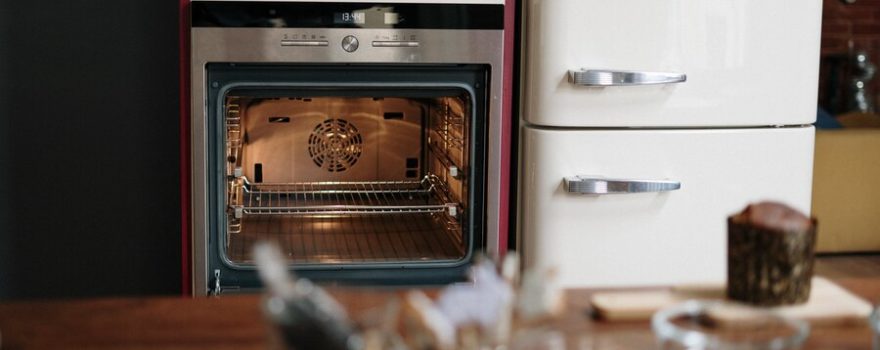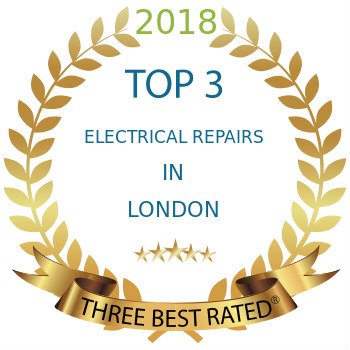
Need a new oven? Convection or conventional? There are so many to choose from that it can be quite overwhelming. You need to start with the basics and discover all the facts so that you choose the right one for you. So, what is the difference between a fan assisted oven and a conventional oven? Read on…
A Brief Convection Oven Guide
What is a convection oven? This oven is also known as a fan assisted oven as the fans circulate the air around the food.
Cooking using convection heat means the switching on of the fan and exhaust system. The heating elements in the back of the oven alongside the fan blows and sends hot air around the oven and your food.
This means you can reduce the cooking temperature by 25 degrees when compared to a conventional oven, as the circulating air transfers heat faster than still air at the same temperature. A true convection oven has three heating elements that ensure that foods are cooked evenly.
Convection ovens do actually use less heat in both the pre-heat and cooking stages. So, convection ovens are more energy efficient, will save you money on bills, and reduce your carbon footprint.
When it comes to the oven itself there’s little difference between the two. Convection ovens are exactly the same as a regular oven – only with an extra feature. A convection oven has an added fan with an exhaust system that circulates heated air around the oven evenly during the cooking time.
A regular oven has one source of heat but often comes with the option to use convection heating when the fan system is turned on. Depending on the make and model of your oven you may have the choice of regular or convection heating.
Convection versus conventional oven basically relates to the difference in airflow affecting the cooking process. A convection oven moves the heat throughout the oven space resulting in a more even cook or bake, a conventional oven tends to have a heat source that remains motionless after the initial rising of the oven heat. This can cause food to be cooked on the top and undercooked at the base.
The exhaust component of the convection oven also draws moisture out of the oven which leaves food crisp, ideal for roasting vegetables and chips. Different settings enable lower fan speeds – using lower temperatures for longer, or higher speeds where recipes need greater temperatures. Lower fan speeds create the perfect roast tomatoes and adjusting to higher speeds provides impeccable meat dishes with crispy outsides!
Convection versus conventional energy use shows that convection ovens are more efficient. This is due to the convection setting eliminating the need for pre-heating, requiring less energy to operate, and cooking in a much faster time.
Convection oven times versus regular oven times are typically faster as the heat stays consistent without any hot or cold pockets of air. You’ll need to check on dishes more often towards the end of the cooking time to ensure no burning. This should ideally be done without opening the oven door which allows air to escape and can disrupt the convection process.
Convection versus regular baking benefits quick breads that are crusty on the outside and moist in the middle. Cupcakes are lighter, fluffier, and slightly larger, and you can easily bake large batches of cookies and muffins at one time.
Pros and Cons
Look at a few facts about a convection oven versus a conventional oven:
Convection
- Lower temperature setting as heating and cooking is very energy efficient.
- Faster cooking times.
- Necessary checking of food when cooking to adjust time.
- Cooking will take longer if the oven is over crowded.
- You need to use baking sheets and low sided cookware as this lets the air circulate around the food.
Conventional
- Radiant heat from burners or heating elements are used to cook food.
- Recipes will be cooked at the given time – they tend to be very reliable.
- Can be used for grilling or roasting, and re-heating.
- Provide adequate room to store meals while keeping them warm.
- Abundance of interior space.
- They tend to cook unevenly with hot and cold spots in the oven.
Settings in Ovens
You may want to consider buying a conventional oven that has a convection setting – then you have the best of both worlds! You’ll be able to get the benefits of cooking with gas or electricity and flick a switch to change to convection cooking. The conventional setting is perfect for delicate batter-type foods that need delicate cooking to set and would be used for:
- Cakes
- Souffles
- Flans
- Custards
- Quick breads and bread
A convection oven has a fan and an exhaust system. This ensures that hot air is distributed evenly around the oven and the food so that it cooks quickly. You would use this setting for:
- Roasting – meat and vegetables cook faster and get crispy skins.
- Toasting – convection is much more efficient
- Pastries and pies – fat is melted and steam created much more quickly so pastry rises beautifully.
- Casseroles – convection cooking is faster with little loss of moisture
- Biscuits and cookies – you’ll be able to bake multiple trays without having to rotate
What to Look for When Buying a Convection Oven
Convection versus standard oven options should include the following four controls:
- Bake
- Convection bake
- Convection roast
- Broil
Additional heating elements adjacent to the fan makes the moving air consistent temperature-wise. This ensures cooking is an extremely even process. This extra heating element can be termed as true convection, European convection, or third element convection.
Size, power, and features should all be taken into account. Convection ovens are available in electric or gas configurations, but both need an electrical connection to operate the fan. The oven should be big enough to cater to your daily needs but not obstructing the kitchen in any way – accessing the oven needs to be easy.
Manual or programmable options can be used for maximum precision as full control of the cooing process can be taken with automatic adjustments to heat and fan speed at the touch of a button.
Core probes typically seen in programmable convection ovens will insert into the meat to monitor the internal temperature of the food, enabling the oven to be set to reduce the heat automatically when cooking is complete.
Accessories such as shallow baking trays, and dishes and pans with lower sides helping the airflow across the food, are ideal. And gastronorm compatible ovens have the benefit of cross-compatibility with other kitchen equipment so that you can transfer food without having to use different containers.
More Interesting Information
Is a convection oven better for baking? Many convection ovens have a convection bake setting that has a lower fan speed which is great for recipes that take longer to cook.
A convection roast setting has a higher fan speed that brings high temperatures – perfect for crisping the outside of meat and vegetables.
Need Your Oven Repairing?
Get a qualified engineer who knows how to fix any kind of oven from a trusted appliance repair company. You’ll be able to book an appointment to suit you – and every repair will come with six-month parts and labour guarantee.



